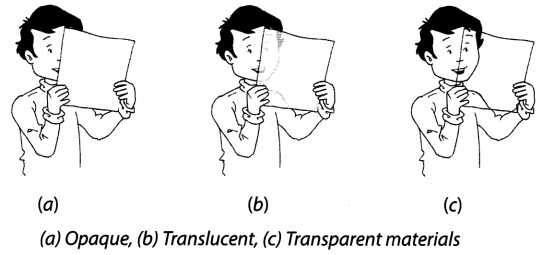On this page, you will find Sorting Materials Into Groups Class 6 Notes Science Chapter 4 Pdf free download. CBSE NCERT Class 6 Science Notes Chapter 4 Sorting Materials Into Groups will seemingly help them to revise the important concepts in less time.
CBSE Class 6 Science Chapter 4 Notes Sorting Materials Into Groups
Sorting Materials Into Groups Class 6 Notes Understanding the Lesson
1. There is a vast variety of objects everywhere.
2. All objects around us are made up of one or more materials.
3. Some of these objects are living and some are non-living.
4. Different things have different shapes, sizes and colours.
5. Things can be grouped in several groups on the basis of similarities in their properties.
6. The process of sorting and grouping things according to their chemical or physical properties is called classification.
7. Classification makes locating objects easier.
8. Anything that occupies space and has mass is called matter.
9. All materials/substances are made of matter.
10. Matter can be classified into three states:
- Solid
- Liquid
- Gas
11. A substance which is made up of matter and is used for making objects is called material,
12. Materials may be of two types:
- Man-made materials
- Natural materials
13. It is the property of material that decides where and how to use it in the appropriate manner.
14. Properties may be of two types:
(a) Physical properties
(b) Chemical properties
15. Appearance: Some materials (objects) may have shining appearance, while others may have dull appearance.
16. On the basis of their appearance, all the materials are classified into two groups:
(a) Materials having lustre.
(b) Materials not having lustre.
17. Materials which are shiny in appearance are called lustrous materials whereas materials lacking this shine are called non-lustrous materials.

18. Hardness: Some substances are hard while some are soft. Those materials which cannot be easily compressed, cut, moulded or scratched, are called hard materials whereas those materials which can be easily compressed, cut, moulded or scratched are called soft materials.
19. Solubility:
- Soluble: Substances that get dissolved in water are called soluble or miscible substances.
- Insoluble: Substances which do not dissolve in water are called insoluble or immiscible substances.
- Solubility of gases: Solubility of gases in water is very less.
20. Buoyancy: Some materials float on water while others sink.
21. Transparency: The property of material due to which we can see through it clearly is called transparency.
- Opaque: Materials through which we are not able to see are called opaque materials.
- Translucent: Materials through which things are only partially visible are called translucent materials.

22. Things are grouped together on the basis of similarities and differences in their properties and to study their properties.
Transparent: Materials through which things can be seen clearly are called transparent materials.
Class 6 Science Chapter 4 Notes Important Terms
Hard: Those materials which cannot be easily compressed, cut, moulded or scratched are called hard.
Insoluble: Those materials which do not dissolve in water are called insoluble.
Lustre: The natural shine present on the surface of certain materials is called lustre.
Material: A substance which is made up of matter and is used for making objects is called material.
Metals: Materials which show properties like lustre, malleability, ductility and a sonority are called metals.
Opaque: Those materials which do not allow the light to pass through them are called opaque.
Rough: Those materials which have uneven surface are called rough.
Soluble: Those materials which dissolves in water are called soluble.
Translucent: Those materials which partially allow light to pass through them are called translucent.
Transparent: Materials which allow light to pass through them are called transparent.